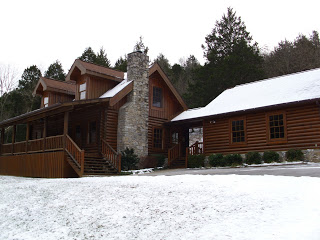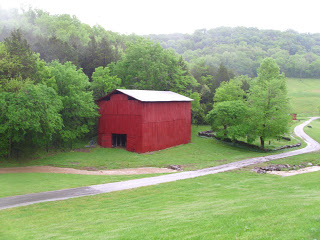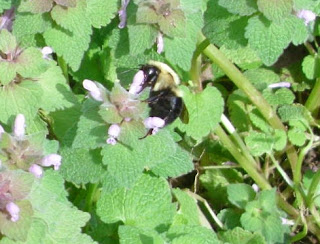About a year ago, we moved to our dream home – a secluded property in a hollow with creeks & rock outcroppings – a beautiful and serene place that we have affectionately named “Half-a-Hundred Acre Wood” (in honor of one of the greatest philosophers of all time). When we moved here, the home had been vacant for a few years. But as winter…
… we realized that it hadn’t really been vacant at all. In fact, the wasps and bees started to come out of the woodwork (inside and outside), and as our nice pest control company rep stated, “It’s a small price to pay for the home of your dreams, Mrs. Ferrell.” (Yes, this is my favorite quote of all time. In fact, my husband uses it any time something goes wrong – like when the spring dried up and we had no water, for example… )
Thus, the Battle of the Bees and the Wasp Wars had begun. Yes, it’s taking a while to break the cyle here. But instead of just battling them, we have decided to do what any crazy homeschooling family would do – we study these neat little insects before we whack them with the badminton racquet. But you won’t find pictures of the boys cuddling up with these little creatures. Actually, the only pictures I’ve taken of wasps are of dead ones. Despite the fact that I am a bit skittish around them, we have ventured out (well, actually in) to learn more about these insects. We’ll split this up into a couple of posts, mainly because I wanted to find a vacant wasp nest so that we can cut it open. 🙂
So, what have we learned thus far?
Carpenter Bees
Not all bees live in colonies. Carpenter bees drill tiny tunnels in which they raise their young. These tunnels are made in the pith of sumac, elder, or raspberry, or in our case, the pine logs that make up the walls of our home. During the summer, this narrow tunnel is made into a little bee apartment complex, with the tunnel partitioned off with one egg laid per apartment.
Anna Botsford Comstock’s The Big Handbook of Nature Study Pages 439-441 (or page 134-136 in Part 4 of the version offered by the Erskine family)
Margaret Williamson’s First Book of Bugs Page 39
Albert Tibbets’s First Book of Bees Page 59




